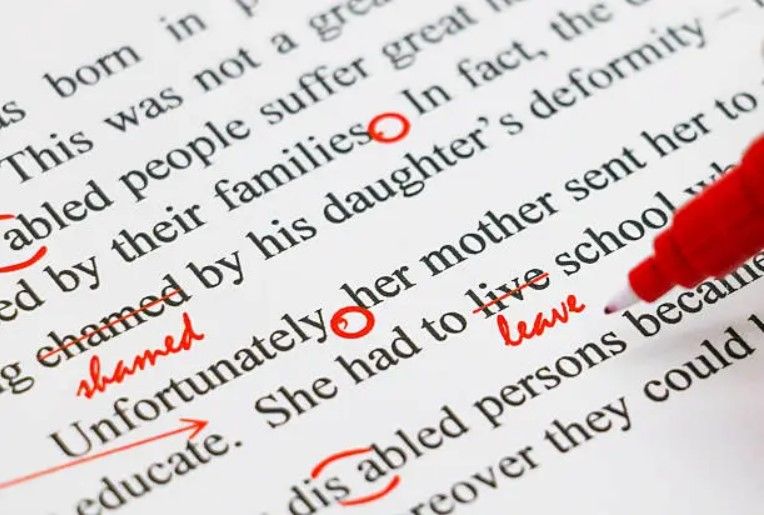Art of Error-Free Writing: Your Guide to Better Communication
Are you ready to embark on an unforgettable writing adventure that will transform your writing from good to exceptional? If you have ever pondered how captivating prose and engaging communication work, look no further. This comprehensive guide will not only help you navigate grammar, punctuation and spelling waters safely but will also equip you with tools necessary for elevating your writing to new levels - we'll start from the very start so as not to overwhelm novice writers - let's dive deep into language mastery and learn how to wield words with precision and elegance! So let's dive in - let's discover this fascinating world together!
The Significance of Solid Grammar

Grammar forms the bedrock of effective communication. Whether you're composing a business email, an academic essay, or a personal blog post, a firm grasp of grammar is essential. Let's address some common grammatical pitfalls and how to steer clear of them:
Subject-Verb Agreement: One common error is mismatched subject-verb agreement. For instance, saying "The team are playing well" should be corrected to "The team is playing well." Always ensure that the subject and verb agree in number (singular or plural).
Run-On Sentences: Run-on sentences can make your writing convoluted and hard to follow. Correct them by using appropriate punctuation. For example, "I like cats my neighbor prefers dogs" becomes "I like cats, but my neighbor prefers dogs" with the addition of a simple comma.
Misplaced Modifiers: Misplaced modifiers can lead to confusion. To avoid this, remember to place modifiers near the word they modify. Example: the sentence, "She found a lost ring in the garden", becomes clearer when written as, "She discovered an unexpected find in the garden.
The Power of Punctuation

Punctuation is the orchestra conductor of your writing, guiding readers through the melody of your words. Let's explore common punctuation errors and how to wield punctuation marks effectively:
Apostrophe Errors: Misusing apostrophes can lead to writing that's less impactful. For example, "Its a beautiful day" should be corrected to "It's a beautiful day" to indicate a contraction (it's = it is) or possession (the cat's toy).
Comma Splices: Comma splices occur when two independent clauses are joined by just a comma, which can disrupt the flow of your writing. Correct them by using a semicolon or a conjunction. For instance, "She loves hiking, he prefers swimming" can be revised as "She loves hiking; he prefers swimming."
Missing Commas: The absence of a comma can sometimes drastically change the meaning of a sentence. As in the classic example, "Let's eat kids" takes on a different tone when corrected to "Let's eat, kids."
Spelling for Success

Poor spelling can undermine the impact of even the most well-crafted sentences. Here's how to tackle spelling issues head-on:
Spell Check: Utilize the spell checker in your word processing software or tools like Grammarly. But remember, these tools may miss context-specific errors like "there" vs. "their," so stay vigilant.
Learn Commonly Misspelled Words: Keep a list of words you consistently struggle with and actively work on improving your spelling of them.
Divide and Conquer: When confronted with challenging words, break them down into syllables. This simple technique can make complex words much easier to spell.
Proofreading Like a Pro

Proofreading is the final touch that can turn a good piece of writing into a great one. Here are some pro tips to elevate your proofreading game:
Take a Break: Step back from your writing for some time before proofreading - fresh eyes often catch mistakes that become overlooked with repeated reading.
Read Aloud: Reading your work aloud can help you identify errors, awkward phrasing, and areas where the writing may not flow smoothly.
Seek a Second Opinion: Don't hesitate to share your work with a friend or colleague for a fresh perspective. They may spot mistakes you've overlooked.
Style Guide Savvy: If you're writing in a specific field or for a particular audience, use a relevant style guide (e.g., APA, MLA, or Chicago) to ensure consistent formatting and citations.
In conclusion, the journey to becoming a proficient writer involves dedication and practice. Start with the fundamentals of grammar, punctuation, and spelling, and gradually refine your skills. Proofreading is your secret weapon to ensure that your writing is free of errors and flows smoothly. Remember, every great writer started as a beginner. With determination and the insights shared here, you're well on your way to becoming a confident and skilled wordsmith. Happy writing!

